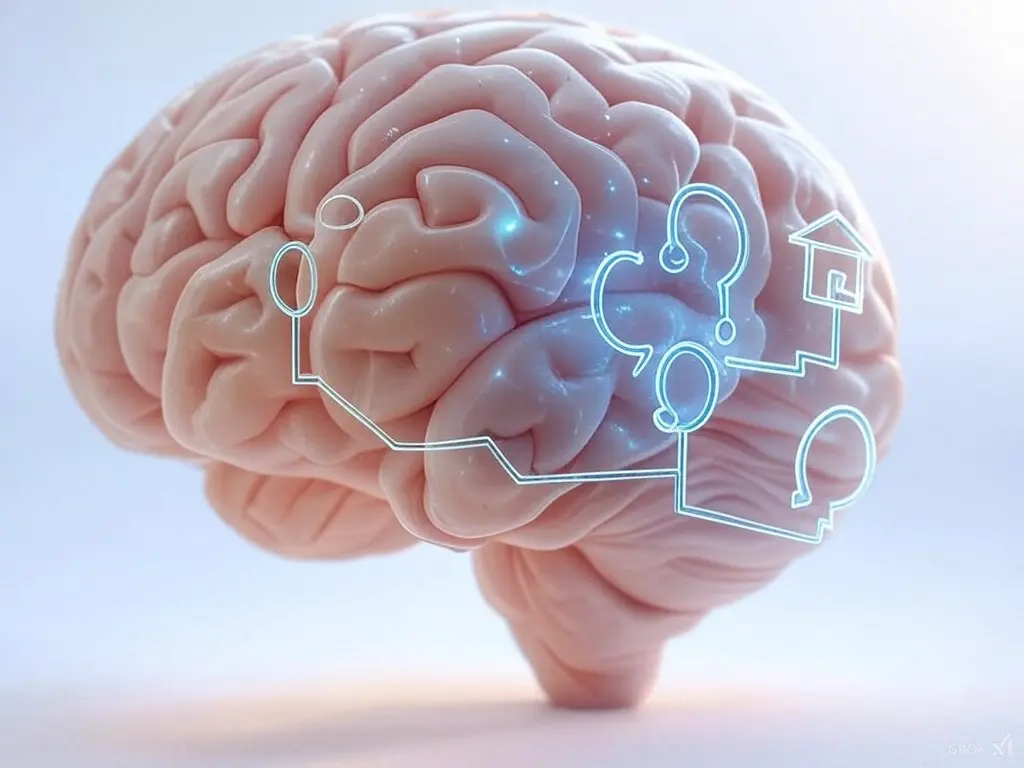The Science of Mnemonics: Why They Work Better Than Rote Memorization
Research shows that mnemonic devices can improve vocabulary retention by up to 43%. Discover how our AI creates personalized memory hooks for Korean words.

The Problem with Traditional Memorization
Traditional vocabulary learning often relies on rote memorization – repeating words and definitions until they (hopefully) stick. However, this method can be inefficient and frustrating. The limitations of our working memory play a significant role in this struggle.
Our working memory, the mental workspace where we process new information, has a limited capacity. George Miller’s famous 1956 paper, “The Magical Number Seven, Plus or Minus Two,” highlighted this limitation, suggesting that we can only hold about 5-9 items in our short-term memory at a time. This “working memory bottleneck” explains why traditional vocabulary lists can be overwhelming.
How Mnemonics Break Through the Bottleneck
Mnemonics bypass these limitations by making new information more meaningful and memorable. They work by connecting new Korean words to existing knowledge through techniques like the Keyword Method.
The Keyword Method involves creating a memorable link between the new word and a familiar concept. For example, to remember the Korean word “사과” (sagwa, meaning apple), you might associate it with a phrase like “I SAW a GWArD eating an apple.” and accompany this with a generated image of a gord eating an apple.

Research supports the effectiveness of the Keyword Method:
- Reduced Cognitive Load: Mnemonics chunk information, making it easier to process and remember.
- Multiple Neural Pathways: They create multiple connections in the brain, strengthening memory traces.
- Visual and Verbal Engagement: They engage both visual and verbal memory systems, enhancing recall.
- Concretization of the Abstract: They transform abstract words into concrete and relatable concepts.
A study by Raugh and Atkinson (1975) demonstrated the efficacy of the mnemonic keyword method, which improved recall performance by up to 1.5 times.
How AI Creates Better Mnemonics
Creating effective mnemonics can be time-consuming. AI can automate this process by:
- Identifying Korean words relevant to your browsing.
- Creating connections to familiar English concepts.
- Generate mnemonic media based on your browsing inputs.
Practical Application
Examples of AI-generated mnemonics for common Korean words:
-
학생 (haksaeng) - student
- Mnemonic: “HACK the SANG-woo’s computer to get better grades.”
-
시작 (sijak) - to begin
- Mnemonic: “To SEE a JACK-in-the-box, you must begin by opening it.”
-
음식 (eumsik) - food
- Mnemonic: “MMM… SICK of regular food? Try Korean cuisine!”
The Future of Vocabulary Learning
The combination of scientifically-supported mnemonic techniques and AI’s ability to generate personalized connections represents a significant advancement in language learning. Say goodbye to rote memorization and hello to effortless, effective vocabulary acquisition.
Key Takeaways
- Mnemonics significantly improve retention compared to rote memorization.
- They work by leveraging existing neural pathways.
- AI can generate personalized mnemonics instantly.
- Effective mnemonics combine sound patterns with vivid imagery.
Ready to experience the power of AI-generated mnemonics? Join our waitlist to be among the first to try our browser extension and start learning Korean more effectively.
References:
- Atkinson, R. C., & Raugh, M. R. (1975). An application of the mnemonic keyword method to the acquisition of a Russian vocabulary. Journal of Experimental Psychology: Human Learning and Memory, 104(3), 126-133.
- Miller, G. A. (1956). The magical number seven, plus or minus two: Some limits on our capacity for processing information. Psychological Review, 63(2), 81–97.
Related Articles: